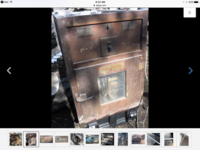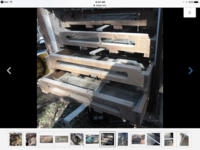KatzFarm
In the Brooder
Looking for operating manuals, restoration advice, and parts sources for restoration of Farm Master (Leahy) 228.7 redwood cabinet incubator. I know very little about incubators and not much more about chicks. I do have a farm, hen house, and now an incubator and the desire to start a nice flock of Barred Rocks.
The back story on the incubator is the breeding stock I am looking for is mostly available via eggs. Hence, I need an incubator. Being I have an affinity for the antique and desire to do things the hard way I bought this cabinet incubator off EBay. I will pick it up next week...11 hour round trip adventure but I can see my son on the way so all is good. I was the underbidding on a Humidaire Model 20. I dropped out at $610 plus shipping. I also missed out on a smaller Farm Master to home and a great deal on another Humidaire 20 on Craigslist. So, I figured I'd get this one even though it is larger than I need. Anyway, i enjoy restoring things and,this will be right at home on the centennial farm
Where can I get parts and which types of replacement parts are recommended such as thermostat etc? I don't mind investing in good parts.
Pointers to other threads, etc, most welcome!
Thanks!
Scott
The back story on the incubator is the breeding stock I am looking for is mostly available via eggs. Hence, I need an incubator. Being I have an affinity for the antique and desire to do things the hard way I bought this cabinet incubator off EBay. I will pick it up next week...11 hour round trip adventure but I can see my son on the way so all is good. I was the underbidding on a Humidaire Model 20. I dropped out at $610 plus shipping. I also missed out on a smaller Farm Master to home and a great deal on another Humidaire 20 on Craigslist. So, I figured I'd get this one even though it is larger than I need. Anyway, i enjoy restoring things and,this will be right at home on the centennial farm
Where can I get parts and which types of replacement parts are recommended such as thermostat etc? I don't mind investing in good parts.
Pointers to other threads, etc, most welcome!
Thanks!
Scott



